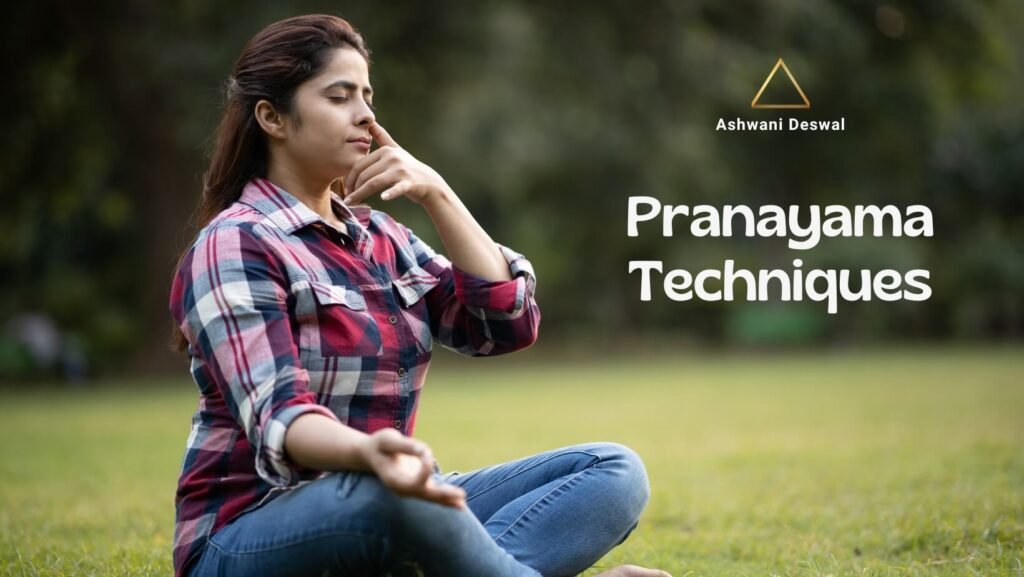Ayurveda,Blog Unlocking Your Prana: Ayurvedic Breathwork for Energy and Vitality 26 March 2024 /MUKTYA Introduction In the ancient healing tradition of Ayurveda, prana is considered the fundamental life force that permeates all living beings. It is the vital energy that sustains life, animates the body, and nourishes the mind. Harnessing the power of prana through breathwork, known as Pranayama, is a cornerstone of Ayurvedic practice. In this blog post, we’ll explore the concept of prana and delve into various Pranayama techniques to help you unlock your innate energy, clarity, and vitality. Understanding Prana: Prana, often described as the breath of life, is more than just the air we breathe. It is the subtle energy that flows through the body, enlivening every cell and guiding our physical, mental, and emotional functions. According to Ayurveda, prana is responsible for the processes of respiration, circulation, digestion, and elimination. It is also intricately connected to the mind and consciousness, influencing our thoughts, emotions, and overall well-being. Prana is said to move through subtle channels called nadis, which intersect at energy centers known as chakras. When prana flows freely and harmoniously, we experience vitality, clarity, and a sense of well-being. However, imbalances or blockages in the flow of prana can lead to physical illness, mental unrest, and emotional disturbances. Through the practice of Pranayama, we can purify and balance the flow of prana, promoting optimal health and vitality. The Benefits of Pranayama: Pranayama offers a myriad of benefits for both the body and mind. Regular practice can: Increase energy levels and vitality Improve respiratory function and lung capacity Enhance mental clarity and focus Reduce stress and anxiety Balance emotions and cultivate inner peace Strengthen the immune system Support detoxification and elimination Harmonize the flow of prana throughout the body Now, let’s explore some simple yet powerful Pranayama techniques to help you unlock your prana and experience greater energy, clarity, and vitality. Deep Abdominal Breathing (Diaphragmatic Breathing): Deep abdominal breathing is a foundational Pranayama practice that helps activate the relaxation response, calm the mind, and promote deep relaxation. Here’s how to practice: – Find a comfortable seated or lying position, with your spine tall and your shoulders relaxed. – Place one hand on your abdomen and the other on your chest. – Inhale deeply through your nose, allowing your abdomen to expand fully as you breathe in. – Exhale slowly and completely through your nose or mouth, gently drawing your abdomen inward. – Continue breathing in this manner, focusing on the rise and fall of your abdomen with each breath. Allow each breath to be smooth, steady, and effortless, like the ebb and flow of the ocean tide. Nadi Shodhana (Alternate Nostril Breathing): Nadi Shodhana is a balancing Pranayama practice that helps harmonize the flow of prana through the body’s subtle energy channels. It is particularly effective for calming the mind, reducing stress, and promoting mental clarity. Here’s how to practice: – Sit comfortably with your spine tall and your shoulders relaxed. – Close your right nostril with your right thumb and inhale deeply through your left nostril. – Close your left nostril with your ring finger and release your right nostril, exhaling completely. – Inhale deeply through your right nostril. – Close your right nostril and release your left nostril, exhaling completely. – Continue alternating nostrils in this manner, focusing on the smooth and steady flow of breath. With each inhalation and exhalation, visualize the flow of prana moving freely through your body, nourishing and revitalizing every cell. Bhramari (Bee Breath): Bhramari Pranayama is a soothing breathwork practice that calms the nervous system, relieves tension, and promotes relaxation. It is named after the sound of a buzzing bee produced during the exhalation. Here’s how to practice: – Sit comfortably with your spine tall and your shoulders relaxed. – Close your eyes and take a few deep breaths to center yourself. – Place your thumbs on your ears, index fingers on your forehead, and remaining fingers lightly over your closed eyes. – Inhale deeply through your nose. – Exhale slowly and steadily through your nose while making a gentle buzzing sound like a bee. – Feel the vibrations resonate throughout your head and body, soothing your nervous system and calming your mind. With each exhalation, release tension and stress, allowing yourself to enter a state of deep relaxation and inner peace. – Repeat for several rounds, allowing each exhalation to be long, smooth, and uninterrupted. After completing the practice, take a moment to notice how you feel physically, mentally, and emotionally. Notice any sensations or changes in your energy levels, clarity, or vitality. Incorporating Pranayama into Daily Practice: To experience the full spectrum of benefits that pranayama has to offer, consider integrating these techniques into your daily routine: Set aside dedicated time each day for Pranayama practice, ideally in the morning or evening when you can be undisturbed. Start with just a few minutes of breathwork and gradually increase the duration as you become more comfortable. Aim for at least 10-15 minutes of Pranayama practice each day to experience noticeable benefits. Experiment with different Pranayama techniques to find what works best for you and your unique needs. Be open to exploring new practices and adapting your routine based on how you feel. Practice mindfulness and presence during your breathwork sessions, focusing your attention on the sensation of the breath as it enters and leaves your body. Notice the subtle movements of the breath and the subtle shifts in energy that accompany each inhalation and exhalation. Be patient and compassionate with yourself, allowing space for exploration and growth in your Pranayama practice. Remember that consistency is key, and the benefits of breathwork unfold gradually over time. Conclusion Pranayama is a powerful tool for unlocking your prana, cultivating energy, clarity, and vitality, and nurturing your overall well-being. By incorporating these simple yet potent breathwork practices into your daily routine, you can tap into the reservoir of life force energy within you and experience greater balance, harmony, and








